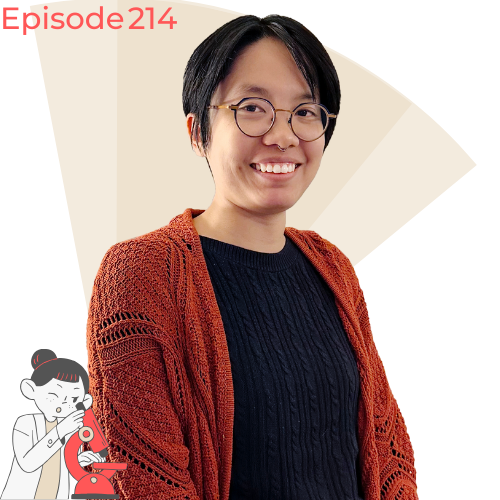What to Expect:
In this episode, Amber Lim discusses her innovative research on predicting the crystal structures of intermetallic compounds. Amber shares her journey from studying chemistry in Texas to conducting computational research at the University of Wisconsin-Madison, and her work on understanding the principles that govern the formation of crystal structures.
About the Guest:
Amber Lim
Amber Lim is a PhD researcher at the University of Wisconsin-Madison specializing in computational chemistry. Her work focuses on predicting the crystal structures of intermetallic compounds and understanding the principles that govern their formation. Amber’s research aims to design new materials with unique properties for various applications.

🌟 Key Takeaways from This Episode:
- Crystal Structure Prediction: Amber’s research focuses on predicting the crystal structures of intermetallic compounds.
- Career Journey: From studying chemistry in Texas to conducting computational research in Wisconsin.
- Favorite Experiment: Using computational methods to predict the properties and behavior of new materials.
🔬 In This Episode, We Cover:
Amber’s Research :
Amber’s research focuses on predicting the crystal structures of intermetallic compounds using computational methods. By understanding the principles that govern the formation of these structures, she aims to design new materials with unique properties for various applications, including electronics and catalysis.
Amber’s Career Journey :
Amber’s academic journey began with a Bachelor’s in Chemistry in Texas. She pursued her passion for computational chemistry, leading her to her current role as a PhD researcher at the University of Wisconsin-Madison, where she focuses on predicting crystal structures of intermetallic compounds.
Amber’s Favourite Research Experiment:
Amber’s favorite experiment involves using computational methods to predict the properties and behavior of new materials. Her work on iridium indium 3, which successfully predicted phase transition temperatures close to experimental values, highlights the potential of computational chemistry in designing new materials.
Life as a Scientist- Beyond the Lab:
Amber values the collaborative nature of scientific research and enjoys engaging with the global scientific community. She is passionate about teaching and mentoring the next generation of scientists and is also involved in science communication through comics.
Amber’s 3 Wishes
- Increased funding for research: Amber wishes for more financial support to advance innovative research projects.
- Greater collaboration between researchers: She advocates for stronger partnerships to enhance knowledge sharing and collaborative efforts in research.
- Improved public understanding of scientific research: Amber emphasizes the importance of public awareness and support for scientific advancements.
Amber’s Time on @RealSci_Nano :
Amber will be taking over the RealSci_Nano Twitter account to share her research on predicting crystal structures and computational chemistry. Followers can expect to learn about the innovative techniques and materials her work focuses on, as well as her science communication efforts through comics.
Join the Conversation
Follow & listen to “Under the Microscope” on Spotify, Apple Podcasts, Castbox, Amazon Music, Goodpods.
Got your own favourite podcast app? Follow the RSS link to find Under the Microscope.
Watch the video of all Under the Microscope episodes on The Science Talk’s YouTube channel. While you are at it, make sure to subscribe to our YouTube Channel.
Learn more about Under the Microscope – https://thesciencetalk.com/under-the-microscope/
Love what we do? Support us:
We also offer partnerships to scientists, research institutions, industry, funding bodies & societies.
Get in touch to start the conversation.
